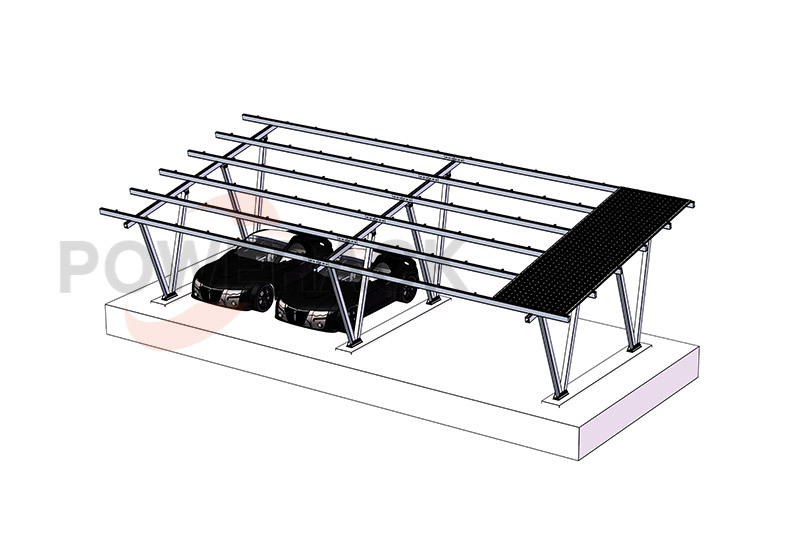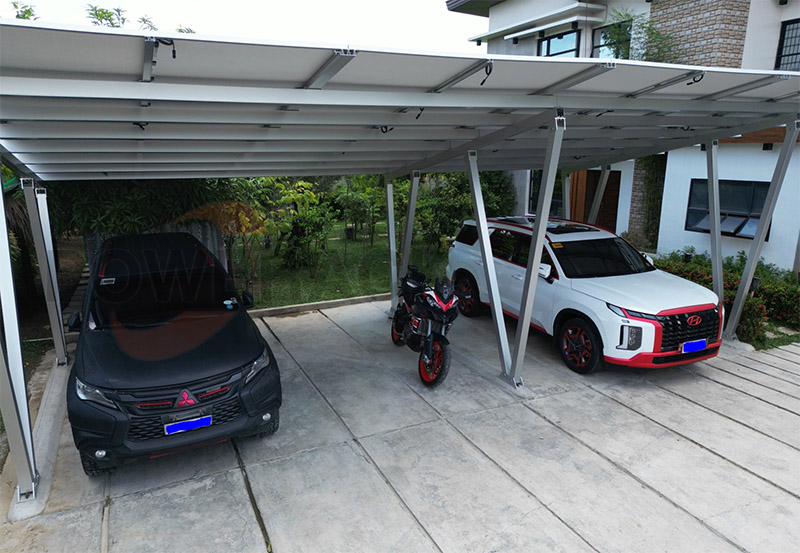
The design of the waterproofing system for PV carports is a critical part of ensuring long-term structural stability and vehicle safety, and its design usually includes the following aspects:

Comprehensive consideration of the drainage system: In the early stages of design, ensure that the top of the carport is designed with a good angle of inclination or gutters so that rainwater can flow away smoothly, avoiding the risk of leakage caused by stagnant water.
Selection of high-quality waterproof materials: Waterproof coatings, waterproof membranes and other materials are used to cover between the PV modules and the carport structure to enhance the waterproof performance. These materials need to have a long service life to match the design life of the PV system of about 25 years.
Node sealing treatment: the splices between PV modules and the connection points between the solar bracket and the carport structure need to be tightly closed with waterproof adhesive or sealing strips to prevent moisture penetration.
Structural waterproof design: For steel or aluminum alloy structure carports, the design takes into account the waterproof characteristics of the structure itself, such as tilting angle and pre-assembly design without welded joints, to reduce water leakage points.
Waterproofing & Bedding: A waterproofing layer, such as a waterproofing membrane, may be placed under the top structure of the carport to add an additional waterproofing barrier. In some cases, a waterproofing matting will also be used under the metal roof to enhance the waterproofing.
Regular Maintenance and Inspection: The waterproof solar carport system needs to be inspected and maintained on a regular basis to ensure that the waterproofing materials have not deteriorated or been damaged, and that any possible leaks are repaired in a timely manner.
Special design response: For aluminum alloy PV waterproof carports, special structural designs may be used, such as additional foam rods and sealant fillers, as well as color steel or aluminum alloy covers at the top to ensure waterproof performance.
Consider long-term waterproofing strategies: Considering the long-term use of the PV system, the waterproofing design needs to take into account the durability of the materials, as well as possible maintenance and replacement needs over the life cycle of the PV system.